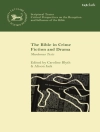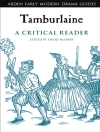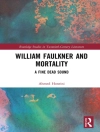In early eighteenth-century texts, the gypsy is frequently figured as an amusing rogue; by the Victorian period, it has begun to take on a nostalgic, romanticized form, abandoning sublimity in favour of the bucolic fantasy propagated by George Borrow and the founding members of the Gypsy Lore Society. Representations of the Gypsy in the Romantic Period argues that, in the gap between these two situations, the figure of the gypsy is exploited by Romantic-period writers and artists, often in unexpected ways. Drawing attention to prominent writers (including Wordsworth, Austen, Clare, Cowper and Bront as well as those less well-known, Sarah Houghton-Walker examines representations of gypsies in literature and art from 1780-1830, alongside the contemporarysocio-historical events and cultural processes which put pressure on those representations. She argues that, raising troubling questions by its repeated escape from the categories of enlightenment discourses which might seek to ‘know’ or ‘understand’ in empirical ways, the gypsy exists both within and outside of conventional English society. The figure of the gypsy is thus available to writers and artists to facilitate the articulation of dilemmas and anxieties taking various forms, andespecially as a lens through which questions of knowledge and identity (which is often mutable, and troubling) might be focussed. .
Sarah Houghton-Walker
Representations of the Gypsy in the Romantic Period [PDF ebook]
Representations of the Gypsy in the Romantic Period [PDF ebook]
Achetez cet ebook et obtenez-en 1 de plus GRATUITEMENT !
Langue Anglais ● Format PDF ● Pages 304 ● ISBN 9780191030161 ● Maison d’édition OUP Oxford ● Publié 2014 ● Téléchargeable 3 fois ● Devise EUR ● ID 3404892 ● Protection contre la copie Adobe DRM
Nécessite un lecteur de livre électronique compatible DRM












